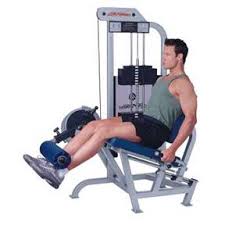Skin care for athletes who train in the sun
/in Health, Safety, UncategorizedGabriella Boston, shared in The Washington Post that although sunscreen season is here, most people with desk jobs have to worry about slathering up only if they go to the beach or the pool on weekends.But what about those who need to be outside to do their jobs or, for that matter, favorite activity?
Swimmers, runners, golfers, tennis players and other athletes often train and compete during the most sun-damaging hours of the day, 10 a.m. to 4 p.m.
“If you’re going for a run midday in the summer, wear a hat, protective clothing and sunscreen,” says Summer Sanders, a 1992 Olympic champion swimmer who has had three melanomas removed. “I never associated skin cancer with training. But the truth is, there is risk associated with any prolonged exposure to the sun.”
But let’s face it: If you’re going for a midday run in summer, it’s going to be hot, and you might not want to wear a hat or long sleeves. Plus, sunscreen might make you feel as if your pores are clogged and you can’t sweat — essential for cooling down.
That’s how Patrick Serfass, a Washington resident and triathlete, says he feels about sunscreen. He’ll wear it reluctantly while training but says that in the end, it affects his performance. So on race day, he goes sunscreen-free (and deodorant-free) to sweat more and cool better.
“My body can sweat more easily, which means I cool faster, and that’s key for performance,” he says.
Why even bother to run (or play tennis or golf) during peak sun hours? Can’t you just train in the early morning or late at night?
Not if you need to make sure your body can handle the conditions under which you’ll be competing, Serfass says.
Failing to do so “can kill your race,” he says. “You have to get your body used to the heat and humidity.”
Some athletes consider summer workouts their version of altitude training. In other words, if you train in horrid conditions and then compete under milder conditions, your results could be better than expected.
Before moving on to other sun-blocking options, let’s take a moment to look around the sunscreen aisle: What type? How much? When to apply?
“You want an SPF 30 or more, broad spectrum and water-resistant sunscreen,” says J. Leonard Lichtenfeld, deputy chief medical officer at the American Cancer Society, referring to the sun protection factor, which measures how well sunscreen protects your skin. “And follow the directions. Reapply when it says to reapply, and use generous amounts.”
Remember that there is no such thing as building a base tan. A tan — any tan — is a sign that skin is unhealthy, Lichtenfeld says.
“It’s the skin’s way of saying, ‘I have a problem,’ ” he says.
Marty Braun, a dermatologist and Mohs (skin cancer procedure) surgeon, says he recommends a daily lotion or face cream that includes SPF, even if it’s as low as 15. (This is for you, office workers whose exposure is limited to commuting to and from work.)





